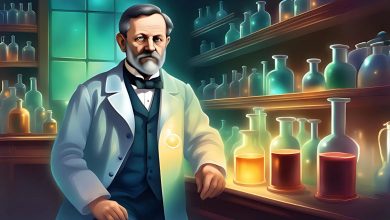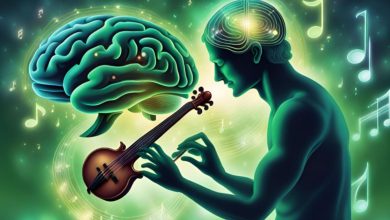The Gaia Hypothesis: Could Nature be a Living Self-cleaning Organism?

The Gaia Hypothesis: Could Nature be a Living Organism?
Nature is cleaning itself! Nature takes its revenge! The sky is bluer, the forests are greener now! These were perhaps the words we heard the most during the pandemic period. In fact, United Nations Environment Director Inger Andersen explained this situation by saying “Nature is sending us a message!“. In these news stories, it is told as if nature is a living being just like us and relieved when we disappeared for a while. So, is there really a possibility that nature is an intelligent organism? Or is all the news just a word game?
First of all, let’s see if nature has really cleaned itself during this pandemic when we were closed to our homes.
During the pandemic, many traveling companies and factories paused their work, albeit for a while. This process had a positive effect on the reduction of air pollution. According to the results of the Energy and Clean Air Research Center, carbon emissions in China have decreased by 25%. In addition, studies by NASA and ESA revealed that nitrogen gas emissions in China decreased by 36% compared to last year.
In other words, our disappearance for a while affects nature positively. Now let’s come to our main question:
Could Earth Be a Self-Cleaning Living Organism?

In the early 1970s, a chemist named James Lovelock , working at NASA, was investigating whether life could be possible on Mars. Since it was not possible to scan every inch of soil on Mars and test for any signs of life, he thought of a different way. If he could learn about the most favorable (optimal) living conditions on Earth, he would be able to test whether this was the same on Mars. If it was different, he would be able to make an inference that life might not be possible on Mars.
James Lovelock came to interesting conclusions while investigating living conditions on Earth. There was an unexpected balance in nature. This balance was just like the internal balance in our body, homeostasis. Homeostasis is when our body maintains a balance within itself, even if external influences change. This balance is established through many chemical reactions that take place without us being aware of it.
To give a simple example, our body wants to keep its temperature around 37 degrees Celsius (about 98 F). Therefore, we try to reduce our body temperature by sweating in very hot environments. In very cold environments, we aim to bring our body temperature to the appropriate 37 degrees Celsius (about 98 F) by shivering.
Lovelock thought that a similar internal balance might be possible for our planet. There were three reasons for this idea:
Earth’s Surface Temperature
Since life began on Earth, the energy provided by the Sun has increased by around 25%-30%. But the planet’s surface temperature has remained remarkably nearly constant.
Salinity in the Oceans
The salt flowing from the rivers was expected to increase the salinity level in the oceans. However, the salinity rate always remained the same, fixed at a rate of 3.5%. This ratio was critical for life. It did not rise to 5% levels, where it was impossible for many living things to survive.
The ratio of Atmosphere Gases
In particular, it was expected that the most active gas after fluorine, such as oxygen, would combine with other substances and decrease its rate. But somehow the oxygen, our source of life, also managed to stay almost constant.
It was as if we were living inside a superorganism, and this superorganism was trying to provide the most suitable conditions and trying to reduce the changing negative external effects.
Based on these three anomalies, James Lovelock suggested that nature somehow regulates itself. He later formulated this inference and renamed it the Gaia Hypothesis. (The person who suggested the name Gaia is the famous writer William Golding, whom many of us know through his book “Lord of the Flies”.)

Image Source: aeon.co
Gaia takes its name from the Goddess who created everything in Greek mythology. Gaia, which we can call the grandmother of the more popular Gods such as Zeus, Poseidon, Hades, is the source and creator of everything in life. She is actually not too far from our culture. We can think of her as “Mother Earth”.


This hypothesis has also found its place in popular culture. In acclaimed science fiction author Isaac Asimov’s Foundation series, there is a planet named Gaia that acts as a sentient superorganism. We also come across a similar scenario in the movie Avatar, directed by James Cameron. In the movie, it is said that the planet is a living organism, while the tree named Eywa is its heart.
Is This Hypothesis Really True?
After presenting the Lovelock hypothesis, a group of scientists, including Richard Dawkins, saw this hypothesis as an unscientific, contemporary religious belief. Lovelock, on the other hand, did not pay much attention to these criticisms since he thought that these comments arose because the name of the hypothesis comes from the Greek Goddess.
This hypothesis, which is based on three fundamental anomalies, is still a highly controversial hypothesis in the scientific world today. Articles are still being written every day to prove the accuracy or falsity of this subject. Therefore, it is not possible to define it as right or wrong with a certain language.
So, even when we set aside the accuracy of the Gaia Hypothesis, it is an important hypothesis as it adds a new perspective to the scientific world.
This journey, which began with the search for life in space, has revealed that even our pale blue planet has surprising aspects. It showed us the importance of thinking about the whole based on small connections.
References and Further Readings
Airborne nitrogen dioxide Plummets Over China. (n.d.). Retrieved February 19, 2021, from https://earthobservatory.nasa.gov/images/146362/airborne-nitrogen-dioxide-plummets-over-china
Carrington, D. (2020, March 25). Coronavirus: ‘nature is sending us a message’, says UN ENVIRONMENT CHIEF. Retrieved February 19, 2021, from https://www.theguardian.com/world/2020/mar/25/coronavirus-nature-is-sending-us-a-message-says-un-environment-chief
Myllyvirta, L. (2020, October 05). Analysis: Coronavirus temporarily reduced china’s CO2 emissions by a quarter. Retrieved February 19, 2021, from https://www.carbonbrief.org/analysis-coronavirus-has-temporarily-reduced-chinas-co2-emissions-by-a-quarter
OWEN, T., CESS, R. D., & RAMANATHAN, V. (1979). Enhanced CO2 greenhouse to compensate for reduced solar luminosity on early Earth. Nature, 277(5698), 640-642. doi:10.1038/277640a0
Ruse, M. (2021, February 19). Gaia: Why some scientists think it’s a NONSENSICAL fantasy – Michael Ruse: Aeon essays. Retrieved February 19, 2021, from https://aeon.co/essays/gaia-why-some-scientists-think-its-a-nonsensical-fantasy
Tyrrell, T. (2013). On Gaia: A critical investigation of the relationship between life and earth. Princeton: Princeton University Press.
Main image by Amber Avalona from Pixabay You can access the source of all other images by clicking on the image.
The proofreading has been done by Asu Pelin Akköse and Mete Esencan.
Would you like to support us?
- For more detailed information, you can check our “Support Us!” page!







